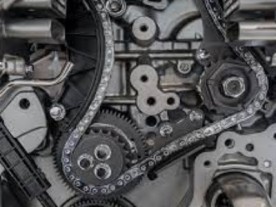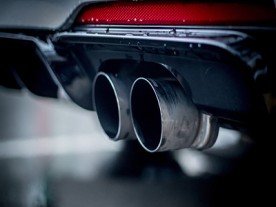How to troubleshoot common issues with Exhaust Headers
Exhaust headers are an important component of a vehicle's exhaust system, responsible for channeling the hot gases from the engine out into the tailpipe. While they are designed to be durable and long-lasting, issues can arise over time that require troubleshooting and repair.

One common issue with exhaust headers is leaks. Leaks can occur at the connection points between the headers and the engine block or the headers and the exhaust system. One way to diagnose a leak is to listen for a hissing or popping sound coming from the engine bay when the vehicle is running. Another way is to visually inspect the connections for signs of discoloration or soot buildup. If a leak is detected, the affected connections should be tightened or repaired as necessary.
Another issue with exhaust headers is rust and corrosion. Over time, exposure to heat and moisture can cause the metal to corrode, leading to holes or weakened areas in the headers. Rust and corrosion can also cause the headers to become loose or detached from the engine block. To prevent rust and corrosion, it's important to keep the headers clean and dry and avoid exposing them to road salt or other corrosive substances.
A third issue with exhaust headers is cracking. Cracks can occur due to excessive heat, vibration, or impacts. Small cracks may not cause any noticeable symptoms, but larger cracks can lead to decreased performance, loud noises, or emissions issues. To diagnose a crack, the headers should be inspected visually, looking for signs of discoloration or deformation. If a crack is found, the affected area should be repaired or replaced as soon as possible to prevent further damage.
A fourth issue with exhaust headers is poor fitment. If the headers do not line up properly with the engine block or the exhaust system, they can cause increased back pressure and decreased performance. To diagnose poor fitment, the headers should be inspected visually and compared against the factory specifications. If poor fitment is detected, the headers may need to be adjusted or replaced with a better-fitting set.
Finally, a fifth issue with exhaust headers is gasket failure. The gaskets between the headers and the engine block or the headers and the exhaust system can become worn or damaged over time, leading to leaks or decreased performance. To diagnose gasket failure, the connections should be inspected visually for signs of discoloration or soot buildup. If gasket failure is detected, the affected gaskets should be replaced with new ones that are designed to withstand the heat and pressure of the exhaust system.
In conclusion, exhaust headers are an important component of a vehicle's exhaust system, but issues can arise over time that requires troubleshooting and repair. Common issues include leaks, rust and corrosion, cracking, poor fitment, and gasket failure. By diagnosing these issues early and taking the appropriate steps to repair or replace the affected components, drivers can ensure that their vehicles run smoothly and efficiently for years to come.








